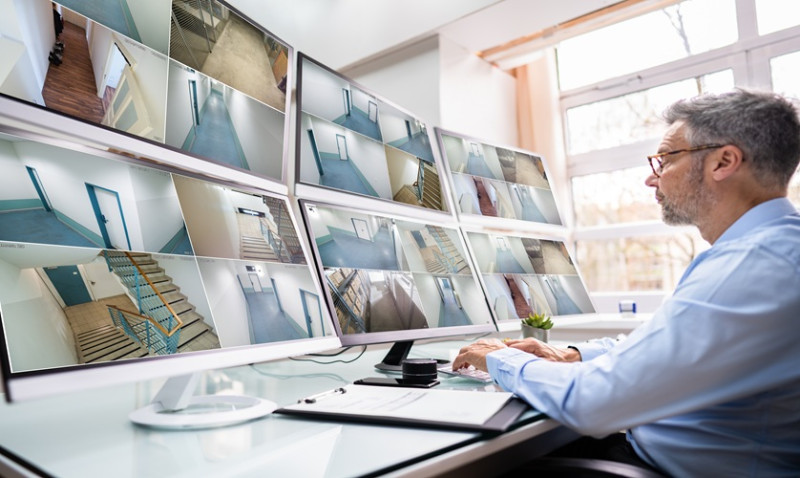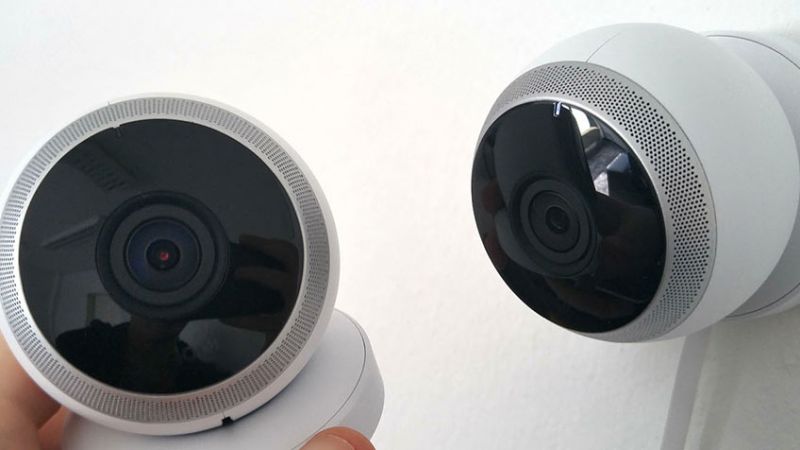
Whether you’re a DIY enthusiast upgrading your home, a design-savvy professional targeting a seamless aesthetic, or a tradesperson sourcing reliable tech for a client, choosing the right security camera system is crucial. As security tech continues to evolve, both wired and wireless systems remain strong contenders. But which one is right for your needs? In this expert guide, we break down the pros and cons of each to help you make an informed decision that suits your lifestyle, project goals, and property layout.
Understanding the Basics: Wired and Wireless Security Cameras Explained
Wired security cameras rely on physical cables to connect the camera to a recording device and power source. These cables typically run through walls or ceilings, making them more complex to install but also more stable in operation.
Wireless security cameras, on the other hand, transmit video footage over a Wi-Fi network. Most wireless systems are plug-and-play and don’t require drilling or complex wiring, which is perfect for renters, flat-owners, and modern construction projects.
Both systems can offer high-definition video, night vision, two-way audio, motion detection, and cloud or local storage. But how they deliver these features — and under what conditions they perform best — varies significantly.
Let’s dive deeper into the ups and downs of each option before recommending the best fit based on real-world experience and UK-specific considerations such as building materials and Wi-Fi limitations.
The Advantages of Wired Security Cameras
Unmatched Reliability: Wired systems offer a consistent, uninterrupted connection. Since they don’t rely on Wi-Fi, there’s no interference from neighbouring networks or risk of video loss due to weak signal strength.
Superior Video Quality: If you're a homeowner recording high-res footage for legal or insurance needs, a wired camera gives you better video quality and frame rate stability, especially for systems using professional-grade NVR (Network Video Recorder) or DVR (Digital Video Recorder) setups.
Ideal for Permanent Installations: A wired system is the preferred choice for large or permanent properties. If you’re an architect designing a smart home or a contractor remodelling a house, integrated wiring ensures long-term viability and compatibility with broadband connections and home automation systems.
No Ongoing Cloud Costs: Wired systems usually record footage locally, so you avoid monthly cloud storage subscriptions. This makes them more cost-effective in the long run if you want 24/7 video recording.
Failsafe Operation: Wired systems are typically less vulnerable to hacking and interference, provided secure cabling and encrypted networks are used. This makes them a favourite among professional tradesmen working on high-security projects.
Disadvantages of Wired Cameras
More Complicated Installation: Routing cables through walls or between floors adds labour and may require hiring a specialist, especially in older UK homes constructed with brick or concrete. This might not be ideal for renters or younger homeowners.
Limited Flexibility: Once installed, changing the camera’s position means more drilling and rewiring. It’s not ideal if you're still experimenting with layout choices or planning future renovations.
Can Be Costlier Upfront: The need for professional installation can increase overall system cost. For budget-conscious DIYers, this can be a setback, despite the longer-term savings.
Dependent on Power Supply: Wired cameras still need a power source. In a power cut, unless you have backup UPS (Uninterruptible Power Supply), your cameras will stop functioning unless you’ve invested in failover tech.
The Perks of Wireless Security Cameras
Quick and Easy Installation: Wireless systems are the top choice for DIY-savvy homeowners, interior designers, and young professionals looking to install a security system without hiring an electrician. Cameras can be mounted in minutes and configured via mobile apps.
Flexible Placement: Wireless cameras can be moved as often as needed. Whether you’re rearranging a room, adjusting your décor, or outfitting a temporary setup, this flexibility is unmatched.
Minimal Drilling or Disruption: Ideal for modern apartments and heritage properties alike, wireless cameras often need little to no wall alterations — a major bonus under UK tenancy agreements or when working in listed buildings.
Integration with Smart Home Ecosystem: Wireless cameras frequently sync with popular smart systems like Amazon Alexa, Google Home, or Apple HomeKit, allowing for seamless home automation and voice control — features particularly appealing to young tech-savvy buyers.
Battery-Powered Options: Some models run on rechargeable batteries, eliminating the need for power cables. Great for outdoor use or remote corners of a property where sockets are scarce.
Drawbacks of Wireless Cameras
Wi-Fi Dependency: Unless your wireless infrastructure is robust, especially in larger UK homes with thick brick walls, you may experience video lags, dropped connections, or limited range. A mesh network can help, but that's another investment to consider.
Cloud Storage Costs: Most wireless systems charge a fee for storing footage in the cloud. While this helps access recordings remotely, you’ll need to budget for this ongoing expense.
Battery Maintenance: If using battery-powered systems, regular recharging or replacement is essential to maintain coverage. Forgetting this step can leave your property exposed.
Potential Security Concerns: Any device on a Wi-Fi network is inherently more vulnerable to cyberattacks. It's essential to use encrypted devices, regularly update firmware, and follow good network security practices.
Comparison Table: Wired vs Wireless Cameras at a Glance
| Feature | Wired Cameras | Wireless Cameras |
|---|---|---|
| Installation Complexity | Professional or advanced DIY | Easy DIY, no specialist tools |
| Reliability | Very High | Depends on Wi-Fi quality |
| Video Quality | Consistently high | Varies with network strength |
| Placement Flexibility | Limited post-installation | Highly flexible |
| Power Supply | Hardwired | Rechargeable battery or mains |
| Cost | Higher upfront, lower ongoing | Lower upfront, cloud storage fees |
| Best For | Permanent setups, high-security needs | Renters, flats, flexible setups |
Expert Recommendations: Which One Should You Choose?
If you're fitting out a new build, home extension, or complete remodel where cables can be neatly hidden, go wired. It’s the best long-term solution in terms of performance and security, especially for homes where broadband may fluctuate or where 24/7 recording is essential.
On the other hand, if you're renting, updating small spaces, or need a temporary or mobile setup, wireless cameras are worth every penny. With their slick apps, compatibility with smart assistants and easy installation, they appeal highly to modern lifestyle demands across the UK housing market.
Professional tradespeople and designers working on client homes should consider the client's budget, how often room spaces are modified, and whether discrete installation is needed. Often, mixed systems (e.g., wired indoors, wireless for external or remote access) offer the best of both worlds.
Remember that you’ll also need to factor in data regulations, such as GDPR, especially if your cameras record or store footage that includes public streets or shared spaces — a key consideration for multi-unit dwellings and business installations.
Final Thoughts
Security isn’t just about technology — it’s about how that technology fits into your life, your design, or your project goals. Wired and wireless security cameras both have their roles, and selecting the right one will come down to your property type, technical skill, and long-term vision. With the right knowledge and preparation, you can create a safe, stylish, and smart home environment your clients or household will appreciate for years to come.
Need help selecting the right camera system for your home or project in the UK? Consult with a local professional or drop us a message — we’re here to help you build a smarter, safer space.



